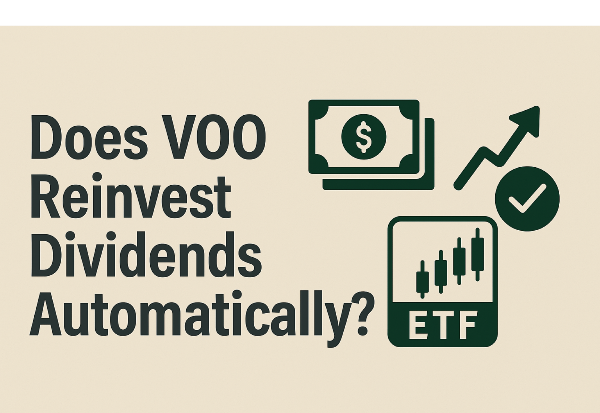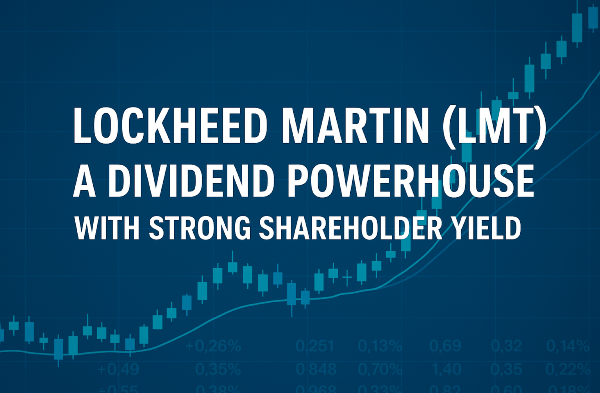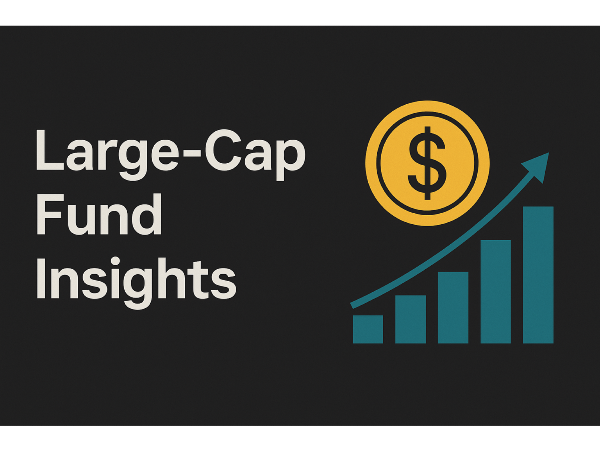Explore why some large-cap stocks offer dividends while others prioritize reinvestment—and how to choose the right strategy for your portfolio
Why Some Large-Cap Stocks Skip Dividends—and What It Means for Investors
Large-cap companies—those with a market capitalization of $10 billion or more—are often seen as the bedrock of stability in the stock market. These firms typically dominate their industries, boast strong balance sheets, and generate consistent cash flow. Because of their financial strength, investors often expect large-cap stocks to provide regular dividend payouts as a form of shareholder reward. Dividends can offer a steady income stream and signal a company’s confidence in its long-term profitability. However, not all large-cap companies follow this path. Some choose to reinvest profits into innovation, acquisitions, or global expansion rather than distribute earnings to shareholders. This divergence in dividend policy raises an important question for investors: why do some of the world’s most valuable companies opt out of paying dividends? Understanding the rationale behind these decisions can help investors align their strategies with the right mix of income and growth potential.
Want expert insights from leading investment podcasts? Scroll to the end to the Podcast Transcripts📜
How Dividends Signal Strength in Large-Cap Stocks
They serve as a tangible reward for investors and are most commonly issued in cash, though some firms offer stock dividends. The dividend yield, calculated as the annual dividend per share divided by the stock’s current price, helps investors gauge the income potential of a stock relative to its market value. For example, if a company pays $4 annually on a $100 stock, the yield is 4%. Investors often turn to dividend-paying large-cap companies like Johnson & Johnson (JNJ) or Procter & Gamble (PG) for their reliability and consistent returns.
For deeper insights, the Motley Fool Money podcast explores how dividend-paying companies outperform in bear markets. In their episode aired March 15, 2025, analysts discuss how dividend growth stocks have historically delivered better risk-adjusted returns. “Dividends are the heartbeat of long-term investing,” says host Chris Hill at 12:47 🕛. Another valuable listen is The Dividend Guy Podcast, which breaks down the difference between high yield and dividend growth strategies. In the April 2, 2025 episode, co-host Mike Heroux notes at 08:22 🕗, “A high yield doesn’t mean high quality—look at the payout ratio and cash flow first.” These podcasts offer practical frameworks for evaluating dividend sustainability and aligning it with your financial goals.
Sources:
Why Top-Tier Companies Like Meta and Amazon Don’t Pay Dividends
Not all large-cap companies distribute dividends—even those with billions in revenue and global dominance. Instead of returning profits to shareholders, some firms choose to reinvest heavily in research, development, and strategic acquisitions. Companies like Meta Platforms (META) and Amazon (AMZN) have consistently prioritized long-term growth over short-term shareholder payouts. Sector-specific trends also play a role. Utilities and consumer staples often pay dividends due to their stable cash flows and lower growth trajectories. In contrast, tech giants operate in fast-evolving markets where reinvestment is crucial to staying ahead.
To explore this further, The Acquired Podcast offers a compelling breakdown of Amazon’s capital allocation strategy. In their February 2025 episode, co-host Ben Gilbert notes at 14:03 🕑, “Amazon reinvests every dollar into infrastructure and innovation—it’s a bet on exponential growth.” Meanwhile, The Techmeme Ride Home dives into Meta’s dividend-free model. In the March 28, 2025 episode, host Brian McCullough highlights at 09:45 🕘, “Zuckerberg’s vision is long-term dominance, not quarterly payouts.” These insights reveal how dividend policies often reflect a company’s broader mission and market philosophy.
Sources:
What Sets Dividend-Paying Large-Cap Stocks Apart
Dividend-paying large-cap companies often share a few defining traits: stable cash flow, mature business models, and a track record of consistent earnings. These firms typically operate in sectors with predictable demand and lower volatility, allowing them to return capital to shareholders without compromising growth. Industries like consumer staples, telecom, and utilities are prime examples, where companies benefit from recurring revenue and entrenched market positions.
Take Johnson & Johnson (JNJ), Procter & Gamble (PG), and Coca-Cola (KO)—all household names with decades of dividend history. These companies have built resilient supply chains, global brand recognition, and diversified product lines. Moreover, many of these firms are part of the “Dividend Aristocrats,” a group of S&P 500 companies that have raised dividends for at least 25 consecutive years.
For a deeper dive, Motley Fool Money featured a March 2025 episode on dividend durability. At 10:58 🕙, analyst Jason Moser noted, “The best dividend stocks aren’t just about yield—they’re about consistency and capital discipline.” Meanwhile, The Investing for Beginners Podcast explored dividend safety in their April 2025 episode. At 07:35 🕖, co-host Andrew Sather emphasized, “Look for companies with low payout ratios and strong cash flow margins—that’s where the real dividend strength lies.”
Sources:
Dividend Growth vs High Yield: Which Strategy Builds More Wealth?
High-yield stocks offer immediate income, making them attractive for retirees or income-focused portfolios. However, these stocks can sometimes signal financial distress or limited growth potential. On the other hand, dividend growth stocks—often part of the Dividend Aristocrats—may start with lower yields but consistently increase payouts over time. Dividend sustainability is the cornerstone of both strategies. Companies like Procter & Gamble (PG) and McDonald’s (MCD) have demonstrated this balance, delivering steady income while growing dividends for decades.
For deeper insights, The Dividend Guy Podcast offers a March 2025 episode comparing high yield and dividend growth strategies. At 11:22 🕚, co-host Mike Heroux explains, “Dividend growth stocks are like fine wine—they get better with time, especially when reinvested.” Meanwhile, Motley Fool Money explores the compounding power of dividend growers. In their April 2025 episode, analyst Ron Gross notes at 09:10 🕘, “The best dividend stocks aren’t the flashiest—they’re the most consistent.” These perspectives help investors align their strategy with long-term financial goals.
Sources:
How to Assess Dividend Potential in Large-Cap Stocks
The payout ratio—the percentage of earnings paid out as dividends—offers a quick snapshot of sustainability. A ratio between 30% and 60% is generally considered healthy, indicating the company retains enough earnings to reinvest while still rewarding shareholders. Free cash flow is another key indicator, as it reflects the actual cash available after capital expenditures. Beyond the numbers, a company’s capital allocation strategy reveals how management prioritizes shareholder returns. For example, PepsiCo (PEP) has maintained a steady dividend while investing in product innovation and global expansion.
To explore this topic further, The Investing for Beginners Podcast offers a February 2025 episode on dividend metrics. At 13:40 🕐, co-host Dave Ahern explains, “Free cash flow is the lifeblood of dividends—without it, payout ratios are just numbers on paper.” Meanwhile, Motley Fool Money dives into capital allocation in their January 2025 episode. At 08:15 🕗, analyst Emily Flippen notes, “The smartest dividend payers are those who know when to say no—to acquisitions, to debt, and even to dividend hikes.”
Sources:
Conclusion
While large-cap companies are often associated with stability and reliable dividend income, this article reveals there’s no one-size-fits-all approach. Some prioritize reinvestment over payouts, especially in high-growth sectors like tech, while others, rooted in mature industries, continue to reward shareholders through sustainable dividends. Understanding the nuances—such as dividend yield vs. growth, the role of capital allocation, and key financial indicators—empowers investors to tailor their strategies to personal goals. Whether aiming for steady income or compounding growth, making informed decisions starts with knowing why dividends matter, when they don’t, and what they reveal about a company’s long-term vision.
🎧 Podcast Transcripts
📌Read More About:
Top Large-Cap Stocks- https://stockbossup.com/pages/topics/large-cap
What Are Large US Cap Stocks?- https://stockbossup.com/pages/post/39168/what-are-large-cap-stocks-a-complete-guide-to-big-companies-in-the-u-s-market
Big Dividend Stocks- https://stockbossup.com/pages/post/39152/best-big-dividend-stocks-for-high-yield-returns
Large Cap Dividend Strategy: How to Build Wealth with Stable, High-Yield Stocks- https://stockbossup.com/pages/post/39234/large-cap-dividend-strategy-how-to-build-wealth-with-stable-high-yield-stocks
10 Best Large-Cap Dividend Stocks for Reliable Income and Growth in 2025- https://stockbossup.com/pages/post/39232/10-best-large-cap-dividend-stocks-for-reliable-income-and-growth-in-2025






























Explore why some large-cap stocks offer dividends while others prioritize reinvestment—and how to choose the right strategy for your portfolio
Why Some Large-Cap Stocks Skip Dividends—and What It Means for Investors
Large-cap companies—those with a market capitalization of $10 billion or more—are often seen as the bedrock of stability in the stock market. These firms typically dominate their industries, boast strong balance sheets, and generate consistent cash flow. Because of their financial strength, investors often expect large-cap stocks to provide regular dividend payouts as a form of shareholder reward. Dividends can offer a steady income stream and signal a company’s confidence in its long-term profitability. However, not all large-cap companies follow this path. Some choose to reinvest profits into innovation, acquisitions, or global expansion rather than distribute earnings to shareholders. This divergence in dividend policy raises an important question for investors: why do some of the world’s most valuable companies opt out of paying dividends? Understanding the rationale behind these decisions can help investors align their strategies with the right mix of income and growth potential.
Want expert insights from leading investment podcasts? Scroll to the end to the Podcast Transcripts📜
How Dividends Signal Strength in Large-Cap Stocks
They serve as a tangible reward for investors and are most commonly issued in cash, though some firms offer stock dividends. The dividend yield, calculated as the annual dividend per share divided by the stock’s current price, helps investors gauge the income potential of a stock relative to its market value. For example, if a company pays $4 annually on a $100 stock, the yield is 4%. Investors often turn to dividend-paying large-cap companies like Johnson & Johnson (JNJ) or Procter & Gamble (PG) for their reliability and consistent returns.
For deeper insights, the Motley Fool Money podcast explores how dividend-paying companies outperform in bear markets. In their episode aired March 15, 2025, analysts discuss how dividend growth stocks have historically delivered better risk-adjusted returns. “Dividends are the heartbeat of long-term investing,” says host Chris Hill at 12:47 🕛. Another valuable listen is The Dividend Guy Podcast, which breaks down the difference between high yield and dividend growth strategies. In the April 2, 2025 episode, co-host Mike Heroux notes at 08:22 🕗, “A high yield doesn’t mean high quality—look at the payout ratio and cash flow first.” These podcasts offer practical frameworks for evaluating dividend sustainability and aligning it with your financial goals.
Sources:
Why Top-Tier Companies Like Meta and Amazon Don’t Pay Dividends
Not all large-cap companies distribute dividends—even those with billions in revenue and global dominance. Instead of returning profits to shareholders, some firms choose to reinvest heavily in research, development, and strategic acquisitions. Companies like Meta Platforms (META) and Amazon (AMZN) have consistently prioritized long-term growth over short-term shareholder payouts. Sector-specific trends also play a role. Utilities and consumer staples often pay dividends due to their stable cash flows and lower growth trajectories. In contrast, tech giants operate in fast-evolving markets where reinvestment is crucial to staying ahead.
To explore this further, The Acquired Podcast offers a compelling breakdown of Amazon’s capital allocation strategy. In their February 2025 episode, co-host Ben Gilbert notes at 14:03 🕑, “Amazon reinvests every dollar into infrastructure and innovation—it’s a bet on exponential growth.” Meanwhile, The Techmeme Ride Home dives into Meta’s dividend-free model. In the March 28, 2025 episode, host Brian McCullough highlights at 09:45 🕘, “Zuckerberg’s vision is long-term dominance, not quarterly payouts.” These insights reveal how dividend policies often reflect a company’s broader mission and market philosophy.
Sources:
What Sets Dividend-Paying Large-Cap Stocks Apart
Dividend-paying large-cap companies often share a few defining traits: stable cash flow, mature business models, and a track record of consistent earnings. These firms typically operate in sectors with predictable demand and lower volatility, allowing them to return capital to shareholders without compromising growth. Industries like consumer staples, telecom, and utilities are prime examples, where companies benefit from recurring revenue and entrenched market positions.
Take Johnson & Johnson (JNJ), Procter & Gamble (PG), and Coca-Cola (KO)—all household names with decades of dividend history. These companies have built resilient supply chains, global brand recognition, and diversified product lines. Moreover, many of these firms are part of the “Dividend Aristocrats,” a group of S&P 500 companies that have raised dividends for at least 25 consecutive years.
For a deeper dive, Motley Fool Money featured a March 2025 episode on dividend durability. At 10:58 🕙, analyst Jason Moser noted, “The best dividend stocks aren’t just about yield—they’re about consistency and capital discipline.” Meanwhile, The Investing for Beginners Podcast explored dividend safety in their April 2025 episode. At 07:35 🕖, co-host Andrew Sather emphasized, “Look for companies with low payout ratios and strong cash flow margins—that’s where the real dividend strength lies.”
Sources:
Dividend Growth vs High Yield: Which Strategy Builds More Wealth?
High-yield stocks offer immediate income, making them attractive for retirees or income-focused portfolios. However, these stocks can sometimes signal financial distress or limited growth potential. On the other hand, dividend growth stocks—often part of the Dividend Aristocrats—may start with lower yields but consistently increase payouts over time. Dividend sustainability is the cornerstone of both strategies. Companies like Procter & Gamble (PG) and McDonald’s (MCD) have demonstrated this balance, delivering steady income while growing dividends for decades.
For deeper insights, The Dividend Guy Podcast offers a March 2025 episode comparing high yield and dividend growth strategies. At 11:22 🕚, co-host Mike Heroux explains, “Dividend growth stocks are like fine wine—they get better with time, especially when reinvested.” Meanwhile, Motley Fool Money explores the compounding power of dividend growers. In their April 2025 episode, analyst Ron Gross notes at 09:10 🕘, “The best dividend stocks aren’t the flashiest—they’re the most consistent.” These perspectives help investors align their strategy with long-term financial goals.
Sources:
How to Assess Dividend Potential in Large-Cap Stocks
The payout ratio—the percentage of earnings paid out as dividends—offers a quick snapshot of sustainability. A ratio between 30% and 60% is generally considered healthy, indicating the company retains enough earnings to reinvest while still rewarding shareholders. Free cash flow is another key indicator, as it reflects the actual cash available after capital expenditures. Beyond the numbers, a company’s capital allocation strategy reveals how management prioritizes shareholder returns. For example, PepsiCo (PEP) has maintained a steady dividend while investing in product innovation and global expansion.
To explore this topic further, The Investing for Beginners Podcast offers a February 2025 episode on dividend metrics. At 13:40 🕐, co-host Dave Ahern explains, “Free cash flow is the lifeblood of dividends—without it, payout ratios are just numbers on paper.” Meanwhile, Motley Fool Money dives into capital allocation in their January 2025 episode. At 08:15 🕗, analyst Emily Flippen notes, “The smartest dividend payers are those who know when to say no—to acquisitions, to debt, and even to dividend hikes.”
Sources:
Conclusion
While large-cap companies are often associated with stability and reliable dividend income, this article reveals there’s no one-size-fits-all approach. Some prioritize reinvestment over payouts, especially in high-growth sectors like tech, while others, rooted in mature industries, continue to reward shareholders through sustainable dividends. Understanding the nuances—such as dividend yield vs. growth, the role of capital allocation, and key financial indicators—empowers investors to tailor their strategies to personal goals. Whether aiming for steady income or compounding growth, making informed decisions starts with knowing why dividends matter, when they don’t, and what they reveal about a company’s long-term vision.
🎧 Podcast Transcripts
Motley Fool Money – “Don’t Just Do Something, Sit There” (March 21, 2025)
Hosted by Chris Hill, this episode discusses dividend aristocrats and the value of brand equity in uncertain markets.
Motley Fool Money – “Dividend Growth and Compounding Returns” (April 2025)
This episode features Ron Gross on the power of consistent dividend growth. You can browse the Motley Fool Money Transcripts archive for more.
The Dividend Guy Podcast – “Trump-Proof Your Portfolio in 5 Steps” (April 2, 2025)
Mike Heroux and co-host discuss how to evaluate dividend quality during economic uncertainty.
The Dividend Guy Podcast – “What to Expect in 2025” (March 2025)
A forward-looking episode on dividend strategy themes for the year ahead.
The Acquired Podcast – “Building Web Apps with Just English and AI” (February 18, 2025)
Hosted by Ben Gilbert and David Rosenthal, this episode includes insights on Amazon’s reinvestment strategy. Transcripts may be available via Happy Scribe.
The Techmeme Ride Home – “Week of 03/03/2025” (March 8, 2025)
Hosted by Brian McCullough, this episode covers Meta’s long-term strategy. Transcripts may be community-generated on Musixmatch.
The Investing for Beginners Podcast – “12 Things I Wish I Knew When I First Started Investing” (February 26, 2025)
Dave Ahern and Andrew Sather break down dividend metrics and capital allocation.
📌Read More About:
Top Large-Cap Stocks- https://stockbossup.com/pages/topics/large-cap
What Are Large US Cap Stocks?- https://stockbossup.com/pages/post/39168/what-are-large-cap-stocks-a-complete-guide-to-big-companies-in-the-u-s-market
Big Dividend Stocks- https://stockbossup.com/pages/post/39152/best-big-dividend-stocks-for-high-yield-returns
Large Cap Dividend Strategy: How to Build Wealth with Stable, High-Yield Stocks- https://stockbossup.com/pages/post/39234/large-cap-dividend-strategy-how-to-build-wealth-with-stable-high-yield-stocks
10 Best Large-Cap Dividend Stocks for Reliable Income and Growth in 2025- https://stockbossup.com/pages/post/39232/10-best-large-cap-dividend-stocks-for-reliable-income-and-growth-in-2025